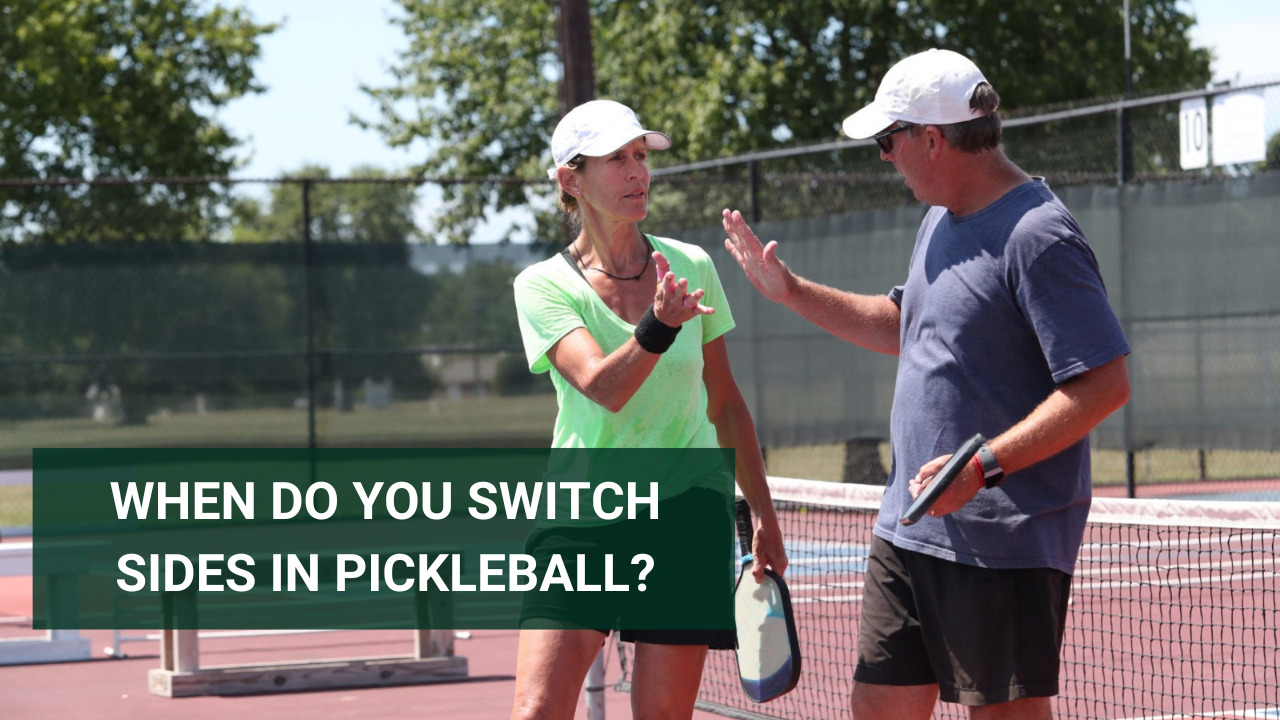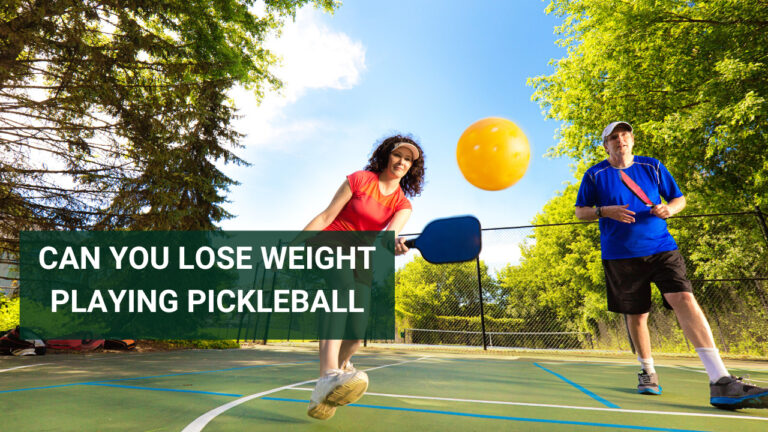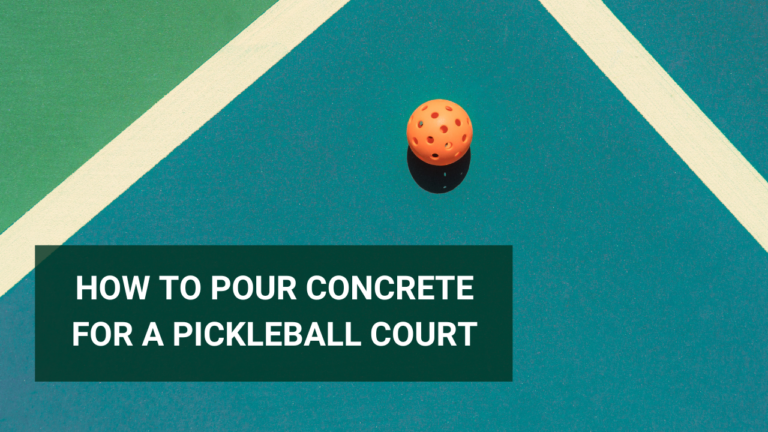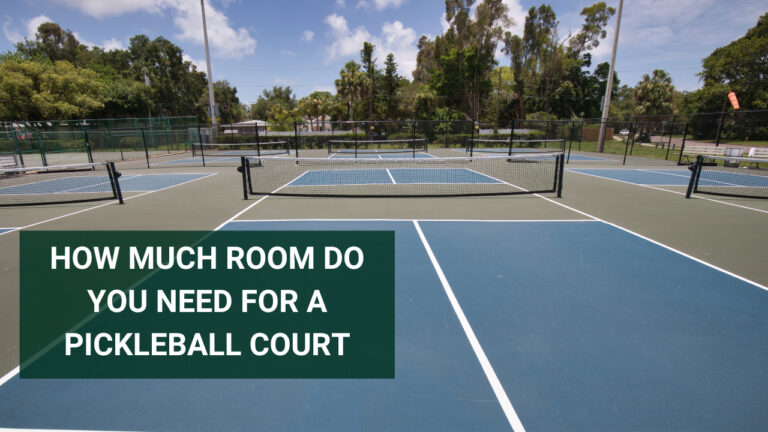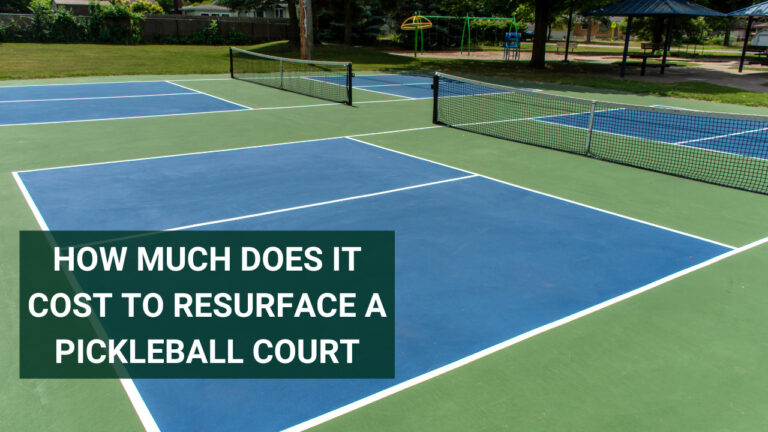When Do You Switch Sides In Pickleball – A Beginner’s Guide
Switching sides in pickleball may sound like a simple routine, but it’s a crucial aspect of the game that keeps things fair, challenging, and strategic. Just like any sport, pickleball has its own set of rules and conventions, and knowing when to switch sides is essential for players at all levels.
In pickleball, you switch sides at the start of a game, after the first server fails to score points, and at the end of each odd-numbered game in a match (1, 3, 5, etc.), ensuring a fair and dynamic gameplay experience.
Whether you’re a seasoned pro or a newcomer to the court, understanding the timing and reasons behind switching sides will not only make the game more enjoyable but also give you a competitive edge. So let’s dive into when do you switch sides in pickleball.
When Do You Switch Sides In Pickleball – Complete Guide
Switching sides in pickleball is an important part of the game. Here are the rules for switching sides:
A. Switching At The Start Of A Game
- Coin Toss Or Other Methods: Before the game even begins, the first decision to switch sides arises. A coin toss, spin of the paddle, or any agreed-upon method is used to determine who serves, receives, and which side of the court each team starts on.
- Default Starting Positions: In the absence of any specific choices, the default positions are either the right or left side of the court. This initial setup provides a balanced starting point for both teams.
B. Switching During A Game
- After The First Server Fails To Score Points: In a game of pickleball, the serving team must score points to retain their serve. If the first server fails to score, it’s time to switch sides, allowing the opposing team a chance to serve from the opposite side.
- After Both Teams Score Points In The Game: Fairness remains a core principle in pickleball. To ensure equal opportunities for both teams, you switch sides after each team has earned points. This keeps the game balanced and competitive.
- At The End Of Each Odd-Numbered Game In A Match (1, 3, 5, Etc.): To account for variances in environmental conditions and prevent any team from gaining an unfair advantage, sides are switched at the conclusion of every odd-numbered game in a match.
C. Switching After A Timeout
- Utilizing Timeouts to Strategize: Timeouts are valuable moments to catch your breath, reevaluate tactics, and potentially switch sides if it suits your strategy. It’s a chance to regroup and refocus.
- The Role Of Timeouts In Regrouping And Changing Tactics: Whether you’re leading the game or facing a deficit, timeouts offer an opportunity to discuss your game plan with your partner, adapt to your opponents’ strategies, and maybe even switch sides to capitalize on a new angle of attack.
Why Switching Sides Matters
Switching sides in pickleball matters for several compelling reasons. Here are some key points to help you understand why switching sides is crucial in pickleball:
- Fairness And Balance
Switching sides ensures that both teams have an equal opportunity to adapt to different court conditions and environmental factors. It prevents one team from having a continuous advantage throughout the game.
- Environmental Factors
The position of the sun, wind direction, and court shadows can significantly affect gameplay. Switching sides allows both teams to share the benefits and drawbacks of these variables, maintaining fairness.
- Psychological Benefits
A change of scenery can be a game-changer for a team’s mindset. Switching sides can break momentum, reenergize players, and provide a fresh perspective on the game.
- Strategic Adaptation
In pickleball, strategy is key, and switching sides can be a strategic move. It allows teams to adapt their tactics based on their opponents’ gameplay or court conditions.
- Court Awareness
Switching sides helps players become more versatile and adaptable on the court. It encourages players to develop a deeper understanding of the game by experiencing different angles and conditions.
So, whether you’re a casual player or a competitive enthusiast, remember that switching sides plays a vital role in maintaining the integrity and excitement of pickleball.
How to Switch Sides
Switching sides in pickleball is an important part of the game. Here are the rules for switching sides:
- In doubles play, players switch sides after each point is scored. The player who served the ball in the previous point will serve again from the opposite side of the court.
- In singles play, players switch sides after every odd-numbered point. The player who served the ball in the previous point will serve again from the opposite side of the court.
If you need to take a break or strategize, you can use timeouts to potentially switch sides. Timeouts are also useful for regrouping and changing tactics.
Strategies For Switching Sides
Strategies for switching sides in pickleball are essential for making the most out of this transition.
Whether you’re adapting to changing conditions, discussing tactics with your partner, or maintaining a positive attitude, these strategies can enhance your gameplay. Here’s a closer look at each of these aspects:
A. Adjusting To Changing Conditions
- Environmental Adaptation: Be aware of how the sun, wind, and shadows are affecting the game. If the sun is in your eyes or the wind is blowing against you on one side, switching can provide relief.
- Court Awareness: Pay attention to how the ball bounces on each side. Sometimes, the surface can vary, affecting ball behavior. Adjust your positioning and shots accordingly.
- Footwork and Movement: Understand that you may need to alter your footwork and movement patterns on the new side of the court. Be prepared to adapt quickly to different conditions.
B. Discussing Tactics With Your Partner During The Switch
- Open Communication: Use the moment of switching sides to communicate openly with your partner. Discuss your observations and experiences from the previous side.
- Strategy Adjustment: If your opponents have been exploiting a particular weakness or if you’ve noticed opportunities, discuss possible adjustments in your game plan.
- Plan For The Next Point: While switching, think about the next point. Decide on your serves, returns, and strategies for the upcoming rally to maintain a competitive edge.
C. Maintaining A Positive Attitude
- Mental Reset: Switching sides offers a chance for a mental reset. Let go of any frustration or negativity from the previous side and start fresh with a positive mindset.
- Team Spirit: Encourage your partner and stay supportive. A positive attitude can boost team morale and help you both perform at your best.
- Embrace Challenges: Instead of seeing switching sides as a hindrance, view it as an opportunity to showcase your adaptability and resilience. Embrace the challenge and stay focused on the game.
In essence, these strategies for switching sides in pickleball can elevate your performance and enjoyment of the game.
Conclusion
In conclusion, knowing when to switch sides in pickleball is essential for maintaining fairness, adapting to environmental factors, and strategizing effectively. Whether it’s at the start of a game, during gameplay, or after a timeout, this practice ensures that both teams have a level playing field and a chance to excel. It’s not just about following the rules; it’s about seizing opportunities, adjusting to challenges, and keeping a positive attitude throughout the match. So, the next time you’re on the pickleball court, remember that switching sides is not just a formality – it’s a dynamic aspect of the game that can make a real difference in your performance and overall enjoyment.
FAQs
How do you know when to switch sides in pickleball?
In pickleball, you typically switch sides at the start of a game based on a coin toss or other methods, and during the game after the first server fails to score points or at the end of each odd-numbered game in a match.
Can you switch sides with your partner in pickleball?
No, you cannot switch sides with your partner during a point in pickleball. Players must maintain their respective positions on the court, with one player on the right side and the other on the left throughout the point.
How do you determine which side to serve from in pickleball?
In pickleball, the side to serve from is typically determined by a coin toss or other agreed-upon methods before the game starts.
Can you drop the ball and serve in pickleball?
No, in pickleball, you must perform an underhand serve, and dropping the ball is not allowed.
